#9/11 attacks
Text
Remember 9/11? Yes.....
REMEMBER (how we were lied to by politicians of both sides about) 9/11
REMEMBER (the people who orchestrated it are still walking free and will never face persecution for) 9/11
REMEMBER (20 years of war based on a lie that is called) 9/11
REMEMBER (how global surveillance and went rampant after) 9/11
REMEMBER (how even today all politicians will "pay tribute" and carry on the facade of) 9/11
REMEMBER (how countless people were offered up for a luciferian sacrifice that started on) 9/11
REMEMBER (how countless families around the world were torn apart from what started on) 9/11
Remember 9/11? Oh I REMEMBER (falling for it and deploying over and over and over and over again thinking I was serving my country because of) 9/11.
476 notes
·
View notes
Text

I just found out that not only did 9/11 canonically happen in the RE universe but Ashley’s dad was president at the time
#ashley graham#president graham#leon s kennedy#tw 9/11#9/11 attacks#9/11/2001#9/11 memes#resident evil#resident evil 4#resident evil infinite darkness#resident evil 4 remake#Capcom
230 notes
·
View notes
Text
im at schools library rn and theres some kids in the next table and they’re playing jenga and they just called it “twin towers”
#kids these days#tw 9/11#9/11#9/11 mention#9/11 joke#9/11 attacks#twin towers#world trade center#dark humor#dark humour tw#kids#jenga#jengapuzzles
25 notes
·
View notes
Text
Since it's the date today, I kinda wanted to ramble about a really good 9/11 book i read a couple weeks ago.
It was probably the first book i've seen that covered both the 9/11 attacks (from the POV of a child in the Towers), and the US invasion of Afghanistan (by the POV of another child living there). I feel like it's really important to cover both sides of the story, since I've seen that many Americans don't know exactly the depth of that war, and the fact that that war killed many more innocent people, who had no play in the attacks whatsoever.
Tragedies are tragedies, and you should learn about both.
20 notes
·
View notes
Text
By: Benjamin Radford
Published: Jan 19, 2024
A few years ago I was asked by an author to review his book, and it contained a discussion of the pyramids at Ghiza. I gave him the following feedback:
“You have a big red herring argument at the bottom of p. 36: ‘not a single group has been able to successfully erect even a scaled-down’ pyramid…. ‘even the skeptical community should be able to build an exact replica…’ This is seriously flawed reasoning, and you repeat this error four or five times. The burden of proof is on those making the extraordinary claim (‘aliens did it’) not the ordinary claim (‘ancient Egyptians did it).’ By your logic, geologists who counter creationist claims about the Grand Canyon would have to spend billions of dollars divert a river over a plain to prove that it was created over millennia by water erosion instead of created that way by God some 4,000 years ago.”
I added that researchers in fact have a pretty good idea of how the pyramids were built. The fact that none of them have (or have tried to) build a replica of the Great Pyramids doesn’t logically mean they are wrong.
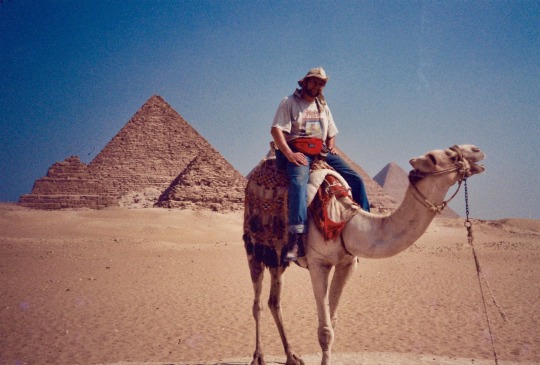
[ The author deciding whether or not to build a full-scale replica of the Great Pyramids. ]
The idea of replicating a controversial event or project to test its validity sounds simple in theory. For example some people claim that the Egyptian pyramids were made (or designed) by aliens or ancient astronauts. The (ahistorical) assumption is that people at the time didn’t have the intelligence or technology to move the stones and build a pyramid shape.
Since the pyramids were built around 2560 BC there are no photographs or depictions of them being created, though in 2015 papyrus records were found of pyramid construction tools, and legions of pyramid builders’ graves were found in 2010, for example. Egyptologists have a pretty good idea of where the rocks were quarried and how they were cut and moved, but doubters are fond of noting that scientists have never actually replicated the pyramids. They claim that skeptics or scientists must build an entire pyramid to prove how it could have been done, using materials and tools of that era.
This seems like a reasonable challenge until you realize why such an effort would never be done—not because it can’t be done but because it would be impractical. Duplicating the great Ghiza pyramid would take many years and cost tens of millions of dollars. Who’s going to pay for it? It would also be pointless, since such a replication experiment would not be valid unless you used tens of thousands of workers (estimate range from 15,000 to 40,000) and spent a decade or more building it (as the original did). If some eccentric billionaire wants to fund it he or she should feel free, but scientists recognize it as an enormous cost and effort just to disprove some wild theories about aliens—which it wouldn’t do anyway.
Replicating 9/11
A similarly misguided idea got notoriety in May 2015 when a man named Paul Salo launched a crowdfunding project which, he claimed, would prove once and for all whether the conspiracy theories about the September 11, 2001, terrorist attacks are true or not. On his Indiegogo campaign Salo wrote: “Many people want to know more about 9-11. We are like a Mythbusters for September 11th. It’s an important project for many reasons. Many people doubt various details of 9-11. As the world has changed our trust in government and media has declined significantly. We want to see for ourselves. We don’t need people to guide our thinking. In this project we will recreate 9-11 to the best of our ability given the funds raised. Our ultimate goal is a fully loaded 767 and a similar structure to the WTC. We will crash the fully loaded (with fuel) plane (complete with black box) into the building using autopilot at 500 MPH.”
Salo aimed to test the widely-challenged (in conspiracy circles anyway) claim that jet fuel can burn hot enough to sufficiently weaken a building’s steel structure that it collapses—instead of, for example, the Twin Towers coming down due to hidden explosives. While Salo’s scheme to duplicate the Twin Towers attack had a simple and populist appeal, actually pulling it off as a valid scientific experiment would be incredibly difficult and expensive, if not impossible. For a real science experiment you need to control for variables that could affect the results; in this case there are many variables including size and weight of the plane, the building type, and so on.
Salo promised that “You will be able to see for yourself what happens under these extreme circumstances. I’m not sure which country we will purchase the aircraft and building but it doesn’t really matter much.” Actually Salo would find when talking to engineers that it matters greatly where the building is, since building codes vary wildly by country and region. Buildings in earthquake-prone regions are built differently (and able to sustain greater structural damage without collapsing) than those built elsewhere. Variations in construction materials will also complicate comparisons. Each building’s architecture is different, and will not necessarily react the same way to the same structural damage. In order for the experiment to be valid, he would need to build an exact replica of the Twin Towers; not just any tall building will do, since the load-bearing structures vary from building to building.
He planned to “recreate as best as we can” the circumstances of the World Trade Center attacks. The problem is that “as best as we [that is, he] can” would leave an enormous margin of error, one so big as to make any results invalid and pointless. His results, should he have pulled it off, would be dramatic and sensational but hold no evidentiary value at all.
As with many such replications, Salo’s experiment would in fact be pointless and inconclusive no matter its outcome: If the building collapsed exactly as happened on September 11, conspiracy theorists would argue—correctly—that the conditions weren’t exactly the same as in the original building collapse. If the building collapses differently, that won’t prove anything either, for the same reason. Neither anyone questioning or defending the “official story” will accept his conclusions and admit they were wrong. Salo’s grand scheme went nowhere.
Bigfoot’s Famous Film
I’ve heard some version of this question dozens of times during my career as a monster investigator. Though I’ve investigated the best photographic evidence for several mysterious creatures—most prominently the 1977 photograph of the Champ lake monster, as seen in the articles Joe Nickell and I wrote in the July/August 2003 issue of Skeptical Inquirer and in our book Lake Monster Mysteries—I hadn’t done an in-depth investigation into the famous 1967 footage taken in Bluff Creek, California, by Roger Patterson and Bob Gimlin (P/G). The film is said to show a female Bigfoot (dubbed Patty) walking across a riverbed.
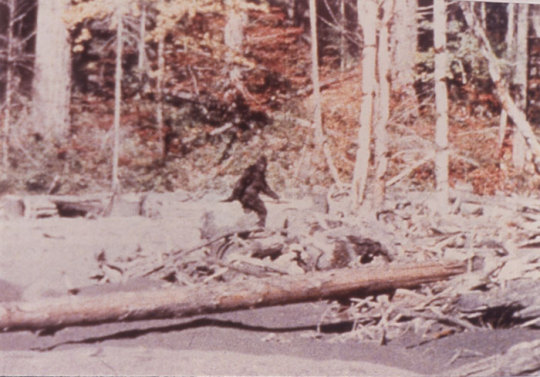
The film has been the subject of controversy and debate for half a century, and is routinely cited as the gold standard for Bigfoot footage (even some fifty-five years later, which is deeply suspicious given the ubiquity of high-quality smartphone cameras since then). Though the footage is blurry, one thing is clear: it’s either a hoax or a Bigfoot. Skeptics have offered damning analyses, both of Patterson and the murky circumstances under which the film was created and developed; see for example Greg Long’s The Making of Bigfoot and Daniel Loxton and Donald Prothero’s Abominable Science. Bigfoot believers offer a variety of responses, many of which wrongly place the burden of proof on skeptics, such as “If it’s a guy in a suit, where is the suit?” and “If it’s faked, why can’t anyone re-create the film using materials available in 1967?”
The alleged failure of the film to be recreated by researchers has long been a popular talking point among Bigfoot believers. A few examples will suffice; a fellow named Scott Renchin, in replying to a Skeptoid YouTube video about the P/G film, wrote in January 2022 that “A real skeptic would prove the film is a hoax by recreating the film using techniques and materials used to create the alleged hoax footage… the BBC did this already and failed miserably.” This same BBC show was also directed to me by noted cryptozoologist Ken Gerhard and others.
Film Replication Claims
The literature on this just-under-one minute film is both voluminous and contentious and there’s a lot to unpack. I’ll begin by noting that my focus is not on Bigfoot’s existence generally, nor even on the authenticity of the film specifically. Over and over when seeking information on this topic, respondents invariably went off topic and dove into why the film is obviously a hoax—or just as obviously authentic. Instead my topic is very specific, and simple: Who, specifically, has actually tried to replicate the film itself, using what equipment, and when? What documentation do we have of sincere, dedicated efforts by knowledgeable experts to create footage that matches the P/G image?
Researchers have tried to recreate the movement of the subject in the film. My colleague Dave Daegling, for example conducted a detailed analysis of the P/G film in his book Bigfoot Exposed and explored the question of whether a human could walk like the creature in the film. He determined that—like the creature’s size and speed which are well within human limitations—it is certainly possible for a person to walk the way it does using what’s called a compliant gait. It’s not the most comfortable method of locomotion for a human, but it’s easy to adopt with a bit of practice and doesn’t rule out a person in a suit.
It was certainly possible to create a realistic costume like that seen in the film in 1967. Planet of the Apes, for example, was released the following year, albeit with the help of professional makeup and costumers.

Those resources would not have been available to Patterson and Gimlin, though Planet of the Apes required close-ups of the actors including faces in sharp focus, whereas the P/G footage is at a great distance, out of focus, blurry, and unstable—all factors that (intentionally or otherwise) obscure details, thwart analysis, and facilitate fakery. The out of focus background actors in ape costumes are a very close match for “Patty.” Hollywood special effects experts including Stan Winston, when asked about the footage, have declared the footage bogus and said that what’s seen in the film would certainly have been possible in the 1960s. In fact a fairly realistic gorilla costume appeared in the film Are You With It?—from 1948, nearly two decades before Patterson and Gimlin set out to film a Bigfoot.

[ Film still from 1948’s “Are You With It?” ]
Instead the question is about replication of the film itself, which is a far more challenging and expensive task, and would require not only the original equipment but a reasonably similar costume, gait, location, environment, and so on.
Where’s Bigfoot (Recreations)?
Alleged films trying to replicate the P/G footage turned out to be nearly as elusive as Bigfoot itself. I found a handful of videos of television shows attempting (usually lightheartedly) to make their own Bigfoot films, while not making any serious attempt to replicate the P/G film per se. For example one show, Evening Magazine, described their half-baked, tongue-in-cheek stab at it in 2005: “We wondered what it would look like if we tried to make a Bigfoot film of our own… We picked up a gorilla suit at Champion Party Supply and made no modifications to it. We used a 16 mm film camera, roughly like the one Patterson used.”
In my questioning of Bigfoot proponents I was often assured that many (or at least “several”) attempts had been made to replicate the film, but when pressed to name one, the BBC show was prominently mentioned (often accompanied by chiding about how I should do better research). Searching for something more substantive and scientific, I reached out to Daniel Perez, a respected Bigfoot researcher and publisher of Bigfoot Times newsletter, to ask if he was aware of any attempts to replicate the film. He kindly provided a list of references to material about the film. Of those, about a half dozen were television shows, and of those only two mentioned any replication or recreation. The first was a 2007 Discovery Channel show titled Best Evidence: Bigfoot which Perez notes “covers the attempted replication of the movements seen in the P-G film” (emphasis added). As noted, this is not the question at hand and in any event if anything casts doubt on the film’s authenticity.
The second was to a 1998 BBC show titled The X-Creatures: Shooting The Bigfoot (available on YouTube under the title The X Creatures Bigfoot and Yeti); see stills below. Of this episode, Perez notes that “The show attempts to recreate the P-G film but certainly appears to fail miserably.” I reviewed the episode a dozen times, and here’s exactly how the narrator describes the attempt (at the 20 minute mark): “Using the same distances recorded at Bluff Creek, the same camera and lens, and an amateur operator, it’s possible to exactly recreate the action of 1967.”

To be clear: The show at no point claims to recreate the Patterson/Gimlin film itself; instead it’s an attempt at recreating the action depicted in the film, which is a very different matter. Accident and crime reconstruction analysts recreate actions all the time, using anything from toy cars to computer animation. It’s a fairly straightforward process that does not require replicating all the relevant conditions at play when an event occurred. Even when an accident or crime is recorded on video, the investigators need not recreate the video itself, just the actions of people and objects seen in the video.
The goal of the X-Creatures show was to determine how plausible Patterson and Gimlin’s claims are using only two criteria: the reported distance, and the original camera and lens. That’s it. The show makes this crystal clear: “The most important revelation… is how close Roger and Bob were to the creature; they were right on top of it, which makes the behavior even less natural. It walked away, utterly unconcerned… At this distance, with this lens, you’re certain to get the creature in the frame—unless you artificially wobble the camera.”
There was no attempt at replicating the original film. Nor, for that matter, was there any attempt at duplicating the costume, which would be necessary for recreating the film. We can plainly see that the hair color is wrong, the hair length is wrong, the size is wrong, the musculature is wrong, and the feet they used looks nothing like what could possibly have made the tracks allegedly found at the site. The angle to the creature is wrong, the terrain is wrong, and so on.
I still have not found a single film or video attempt at recreating the Patterson/Gimlin film using period equipment, the correct location, a credible costume, and other important criteria. Defenders of the P/G film can’t have it both ways, disingenuously arguing on one hand that this BBC show was the best filmmaking expertise made to replicate the film while smugly noting that it was an obvious failure because it looks nothing like the original.
With Bigfoot proponents unable to identify a single attempted film recreation, I tried a different approach and asked Craig Scott Lamb, a filmmaker, film historian, and administrator of the Ape Suit Cinema, a Facebook group dedicated to filmed ape costumes. Lamb replied, “I know of no actual attempts by special FX professionals to replicate what was seen in the Patterson film. However considering the cost of a pro ape suit I can certainly understand the lack of motivation… In other words who’s going to foot the bill?”
Lamb’s question is as enlightening as his answer: No special effects experts he’s aware of have even tried to replicate the P/G costume—much less in service of a failed attempt to replicate the film itself— but he’s exactly correct about one of the key impediments to replication. Whether the Patterson/Gimlin film is real or not, the fact that no one has tried to replicate it is irrelevant to its authenticity.
More importantly, the Bigfoot community has the logic exactly backwards: the question is not why no one has replicated the film if it’s a hoax, but instead why no one has replicated the film if it’s real. In other words (regardless of the film’s authenticity) why does the best Bigfoot footage date back to the Lyndon Johnson administration and the release of Sgt. Pepper’s Lonely Hearts Club Band?
This poses a serious blow to the film’s credibility: these Bigfoot creatures are really out there wandering in front of eyewitnesses with cameras, why haven’t better films and videos emerged in the past fifty-six years? Both still and video cameras have become much higher quality and much cheaper over the past decades. It used to be that quality cameras were needed to take high-quality photographs; anyone could take a blurry Disneyland vacation photo with a pocket camera, but to get clear, sharp shots you often needed a more expensive camera and lens.
These days most people have a twelve megapixel high-definition camera in their pocket smartphones, which provide stabilizing, zoom, and other features that would have been the envy of Hollywood only a decade ago. At no time in history have so many people had high-quality cameras on them virtually all the time. If Bigfoot, Nessie, and the chupacabra exist, logically the photographic evidence for them should improve significantly over the years. Yet it hasn’t. Photographs of people, cars, mountains, flowers, sunsets, deer, and literally everything else in the world have gotten sharper and clearer over the years. The only exceptions are things never proven real, such Bigfoot, ghosts, and UFOs.
It’s true that replicating the P/G film would be difficult and expensive, but this has nothing to do with the content of the film. To use a simple analogy, period Hollywood films are notoriously expensive for the simple reason that to make them look authentic the production designers must locate era-appropriate props, costumes, and more. A film set in the early 1900s, for example, may need vintage vehicles, clothing, telephones, and so on. These can be rented from prop shops, but still require much more effort and cost to secure than would ordinary objects of today.
If someone did spend considerable time and effort to create a convincing costume and setting, that would not serve to silence the critics but bolster them; the response would not be, “Yes, you’re right, it can be credibly duplicated” but instead, “Yes, but see how much money you had to spend! Patterson and Gimlin didn’t have these resources, so it couldn’t have been faked!”
Replication in Investigation
Replication can certainly play an important role in skeptical investigation, though recreating the circumstances surrounding an “unexplained” event is far more crucial than necessarily duplicating or replicating a given sighting, photograph, or video.
It’s actually quite easy to capture a photographic image that cannot be replicated in every detail. A photograph is a two-dimensional representation of a split-second moment in time (depending, of course, on how long the exposure is) in a constantly changing environment. Replicating some photos is easy—a close-up of a shiny penny in fixed studio lighting, for example. But outdoor photographs, or those of urban settings, can be difficult or impossible to exactly replicate in every detail—which is the standard often demanded. Clouds come and go by the hour (sometimes by the minute); leaves move position in even a slight wind.
Keep in mind that a full and true replication may require the original people or objects, under the exact same conditions. Depending on what part of the image is under scrutiny (a dark manlike patch in shady wooded area, a face seen in a ghost image, or an odd light in the sky) the image may look different. Sunlight reflection off a gleaming polished fender of a 1958 Corvette, for example, might potentially help explain a mysterious light or image. Substituting a 1984 Honda or a 2012 Ford in a replication photograph may not get the same results.
A close-up photograph of an egg taken in 1950 might look identical to one taken with the same camera and lighting as one taken a century later in 2050. But in most cases a landscape photo will be difficult or impossible to exactly replicate 100 years later. But more importantly, the task of recreating the film, as a practical matter, is enormously difficult under the best of circumstances. We can begin with the terrain, which like all other natural habitats, has of course changed significantly in the past fifty-five years. Consider all the environmental factors at play: Trees die and fall, rivers and streams move, and so on.
I’ve done replication in some of my investigations, including for the Santa Fe Courthouse Ghost, Sandra Mansi’s photograph of the Lake Champlain monster, and so on. But I’m always careful to include qualifiers and not claim to have duplicated anything exactly, but merely as best I can under the circumstances. Claims about how skeptics can’t (or won’t) duplicate things such as the Patterson/Gimlin Bigfoot film, or the pyramids, or anything else are spurious red herrings.
The question has broader implications for investigative skepticism. In many cases, using the principle of Occam’s Razor, replication should be enough to demonstrate that an extraordinary claim is indeed unlikely to be true. For example self-described psychic-turned-“entertainment artist” Uri Geller rose to international prominence in the 1970s and 1980s performing various acts which could be—and have been—duplicated by professional magicians, perhaps most notably the late Amazing Randi. This does not of course provide conclusive proof that Geller was simply a skilled magician instead of a psychic, which is after all impossible to prove. It does, however, give critical thinkers a logical, rational, science-based reason to doubt the claims.
Science is based on comparisons—between control groups and experimental groups, for example. By controlling variables and comparing two groups of people or situations, scientists can tease out what factors are at play. The key here is the variables under control. A photograph, film, or video represents a fixed—and usually very short—moment in time. With the exception of long exposures, most photos are a two-dimensional representation of what was in front of a lens for a fraction of a second. We can’t see what happened just before or after the shutter opened. The P/G film, which is after all just a series of photographs when speeded up give the illusion of movement, is just under a minute long, and one reason it’s suspect is that we don’t see the figure coming into or exiting the frame.
For more on the topic of science and replication see my Skeptical Inquirer article “Skepticism and Pseudoexperiments” in the September/October 2020 issue.
Data Replication
Though I’ve focused here mostly on photographic replication, there are other aspects worth mentioning. The issue of replication in science is pretty straightforward: It’s essential for establishing the validity on an experiment. Because well-controlled studies are difficult to design and carry out, there is always the chance that a given outcome will be the result of random chance, experimenter bias, or any number of other factors. If a result is true and valid, then any other researchers following identical procedures should, in theory, get similar result—though, it should be noted, they may not necessarily interpret the results in the same way.
Replication is such an issue in science that the inability to replicate results has garnered significant attention. BBC News reported that “Concern over the reliability of the results published in scientific literature has been growing for some time. According to a survey published in the journal Nature more than 70% of researchers have tried and failed to reproduce another scientist’s experiments.” Skeptical investigation sometimes involves designing experiments and scientific protocols, for example when testing dowsers, psychics, and others (see, for example, “Testing Natasha” by Ray Hyman in the May/June 2005 SI and Jim Underdown’s work with the Los Angeles-based Independent Investigations Group).
Depending on what’s being measured, replication can be difficult under the best of circumstances. If you’re trying to replicate a population study it’s important to look at the statistical methodology to be sure a representative sample was used; slight variations in the underlying populations can introduce confounders and thus create spurious (Type I and Type II) errors, suggesting that an experiment has not been replicated when in fact it has, or vice-versa.
Whether the topic is a famous Bigfoot film, 9/11 attacks, pyramids in Egypt, psychic powers, or anything else, the oft-heard complaint that something can’t be—or hasn’t been—duplicated or replicated is often a red herring. Despite its strong anti-elitist and populist appeal, the claim demonstrates a fundamental lack of knowledge about control groups and science in general.
#skepticism#scepticism#science#replication#Benjamin Radford#skeptic#sceptic#sceptical investigation#skeptical investigation#bigfood#pyramids of giza#pyramids of ghiza#9/11#September 11#world trade center#9/11 attacks#science experiments#what science is#religion is a mental illness
7 notes
·
View notes
Text
youtube
Following the September 11 attacks on the United States, Queen Elizabeth II directed her Royal Guards to play the National anthem of the United States. This broke a tradition that had lasted for more than 600 years in which the Guards had never played the national anthem of a foreign power during the changing of the Guard.
The ceremony was repeated on the 20th anniversary of the attacks on September 11, 2021.
youtube
#9/11 attacks#9/11/2001#9/11 remembrance#remember 9/11#never forget#9/11 terror attacks#Youtube#video
14 notes
·
View notes
Text
Tried making a phone call earlier but it went straight to voicemail.
Idk what I was expecting.
Now, all I’m saying is…
*splintering and shuffling noises*
Wait…
Is that a potato on the windowsill?
The back garden is COVERED in wood chips. I gotta clean this shit up.
Let’s check the calendar. September 11th. Hmm…
What?
What do you mean don’t look out the window.
What could possibly-
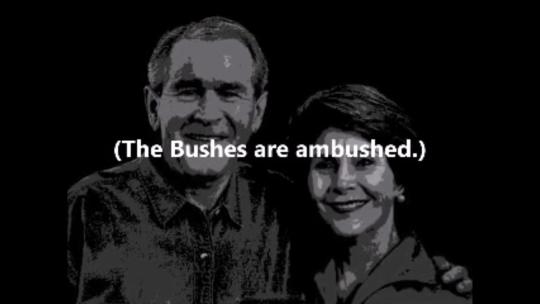
*UNGODLY CACOPHONY OF INDESCRIBABLE EARTH-SHATTERING NOISE AND DESTRUCTION ACCOMPANIED BY FAINT AGONISED SHRIEKING!!!!!!!!!!!*
#dougie rambles#personal stuff#9/11#9/11 memorial#9/11 attacks#shitpost#highbrow shitposting#my poor attempt at a joke#this sounded funnier in my head#what#no context#mister manticore#the house in the ocean#the shoreside mirages#analog horror#ambush#bushes#the bushes are ambushed#political crap#sort of
14 notes
·
View notes
Text
Cool, feel free to joke about the tragedy of today but know that several children in the daycare at the base of the towers, their parents who worked there, first responders trying to help, and roughly 800 people in the 4 planes had to choose between being burnt alive or falling to their own deaths because it was faster.
#tw death#Chris continues#it gets on my nerves#9/11#9/11 attacks#it isn’t funny#I saw a meme#thought it was cute#great#esp w my gen (genz)#too young to remember or not even born yet#people are rather insensitive about it#people lost their lives. and it’s not something avoidable or stupid or amusing#or even partly humorous or laughable#like a bunch of other dumb incidents#no. shit happened. it was real. not funny.#dark humor is one thing but idk#it just#it hurts.#not targeted
8 notes
·
View notes
Text
Hello there, today is a sad day. As this happened 22 years ago on this day, September 11th, 2001, New York City went on their daily day as usual but then everything changed at 8:46 a.m. want a plane crash? I won the twin towers of the World trade Center, then another plane crash to the second. Then the whole tower crumble and thousands lost their lives, It was such a tragic day
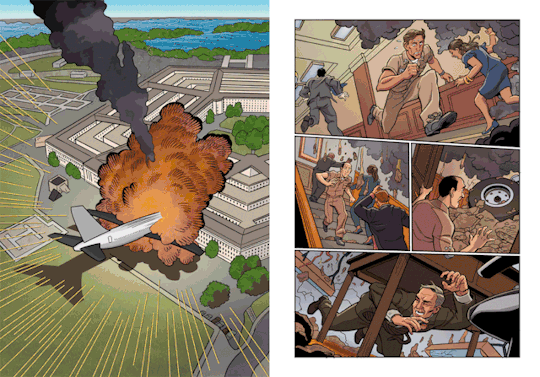
So let us take the time to remember those who list their lives to save other people and those who survived and mourn those who perish and died on this horrible event
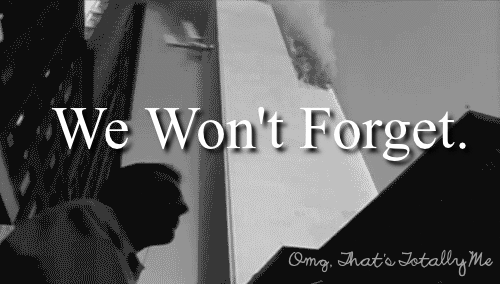

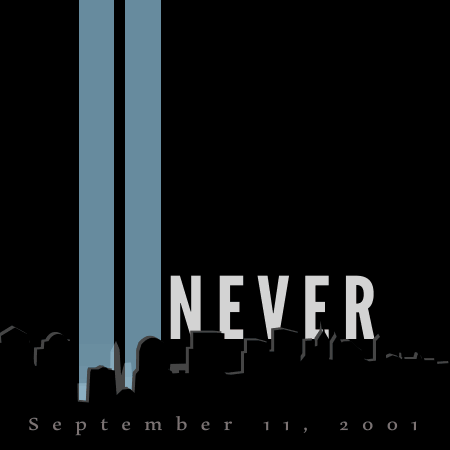



#9/11#22nd anniversary#9/11 anniversary#2001#9/11 attacks#september 11th#terrible day#honoring those we lost#september 11#world trade center
8 notes
·
View notes
Text
That moment when he was told everything was going according to plan.

222 notes
·
View notes
Text





If we really cared about 9/11, we’d make sure that the health program created FOR victims of 9/11 actually helped them instead of being a money sink.
#never forget#is a joke#9/11#9/11 attacks#9/11/2001#please pass it on#I’ve posted about this before#but maybe the tragedy’s birthday will lead to more attention#more people need to see this#shameful#really is shameful
6 notes
·
View notes
Text
ngl but like.. i don't get 9/11 jokes. at all. don't get me wrong, i ain't gonna tell you what to do but like.. why do you wanna joke about that specifically. or wars, or disasters, or literally any bad thing that happens, why is everyone so quick to jump and make fun of it, especially the people that didn't experience it.
11 notes
·
View notes
Text
Ground Zero Bible - 9/11 Artifact
Paper from a Bible, fused to a piece of steel, was found in the debris shortly after 9/11 by a fireman and given to photographer Joel Meyerowitz. In 2010, he gave it to the September 11 Memorial Museum.
The passage of scripture that is fused to the piece of steel is from Jesus’s famous Sermon on the Mount in Matthew chapters five through seven. The segment of that sermon that is readable says this:
“You have heard that it was said, ‘AN EYE FOR AN EYE, AND A TOOTH FOR A TOOTH.’ But I say to you, do not resist an evil person; but whoever slaps you on your right cheek, turn the other to him also.”
On this day of remembrance for the lives lost, remember to not allow anger and hatred to spread through you. Instead pray for those that hate you and wish harm to you. Walk in peace today with all people so that you may be called sons and daughters of God.
youtube
#9/11/2001#9/11 attacks#9/11 families#9/11 inside job#bible#jesus christ#christianity#scriptures#true stories#true gospel#truth#peace#peacemaker#Youtube
32 notes
·
View notes
Text
Statements that Rep.-elect George Santos (R-N.Y.) made last year about his mother’s death have come under scrutiny in the aftermath of a series of revelations about false statements he made about himself during his campaign for the House.
In one tweet Santos posted in July 2021, he responded to an account with the display name “9/11 was a victimless crime” by saying “9/11 claimed my mothers life… so I’m blocking so I don’t ever have to read this again.”

But in another tweet that December, Santos said Dec. 23 of that year marked the five-year anniversary of his mother’s death, indicating she had died in 2016.

The Hill has reached out to Santos’s campaign for clarification.
Journalist Yashar Ali first reported the two tweets on Wednesday.
Santos says on his campaign website that his mother was in the South Tower of the World Trade Center during the 9/11 attacks and survived that day. But it says she died “a few years later” after losing her battle with cancer.
An obituary for Santos’s mother states that she died on Dec. 23, 2016.
The scrutiny comes as Santos faces backlash after admitting he made several false claims about his educational, work and personal background while running to represent New York’s 3rd Congressional District. Santos defeated Democrat Robert Zimmerman by about 8 points, which helped seal the GOP’s narrow majority in the House.
Some of the false claims Santos made while running as a candidate include that he is a “proud American Jew,” graduated from Baruch College in New York and owned 13 properties. He has since said he “never claimed to be Jewish” and admitted he never graduated from college and owned no properties.
Both local and federal officials have launched investigations into Santos over his false claims, and many Democrats have called on him to resign. A few incoming and current Republican members of the House have said Santos should face an investigation or that the House Republican Conference should evaluate his role in the party and the House.
#us politics#news#the hill#2022#us house of representatives#gop#conservatives#republicans#tweet#twitter#new york#rep. george santos#9/11 victims#9/11 attacks#Yashar Ali#world trade center#making false statements#baruch college#nyu#jewish heritage#college education
18 notes
·
View notes